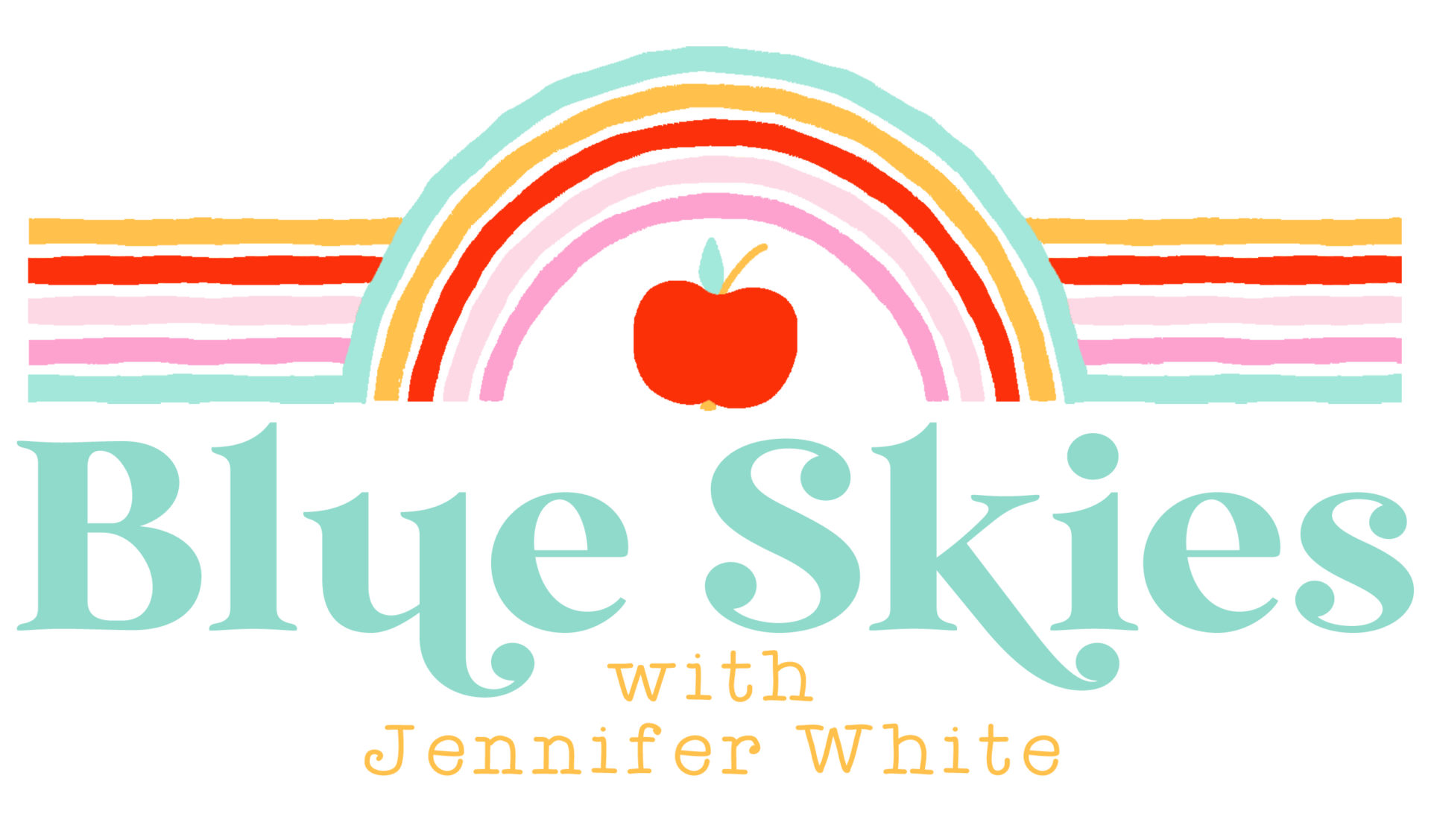

Writing Biographies! {FREEBIE}

You May Also Like

53 Comments
I will be teaching biographies later in the school year. I love that your pack includes interviewing and writing biographies about a friend/classmate. Thanks for the chance to win it 🙂 Storie [email protected] Stories by Storie
I love the idea of combining genre study, writing, and social studies! My firsties would love this pack!
I love all the cute choices for people to write biographies about!
Teacher at Heart Teachers Pay Teachers [email protected]
This pack looks amazing! We are getting ready to learn about Washington and Lincoln and I think this cute pack will be perfect for my class! I LOVE it! Lori Teaching With Love and Laughter [email protected]
We are starting informational writing this quarter and this would be the perfect resource to use! I love that you made it printer friendly! Thank you for the chance to win. Teacher Gone Digital [email protected]
Love your units…I own SEVERAL…would love to add this one!!! Thanks for helping make my job easier with all of your wonderful packs! [email protected]
This looks like such a great unit for teaching little ones about biographies! I would love to add this to my classroom library!!! 🙂
Jennifer [email protected]
Fantastic! And this pack works with our mini biography unit coming up! Jennifer you are truly amazing!! 🙂 [email protected]
This looks great! I would love to win! [email protected]
It's funny that you just created this pack because we just added the word biography to our "wow words" wall! I deleted the previous comment because it didn't make sense!
Jennifer, this biographies pack looks AMAZING! I would love to win a copy!
Christy [email protected]
This is adorable! I love all of the things you create!
Tawna [email protected]
I love your units and we also teach about biographies especially at this time of year. We also use Storytown! [email protected]
You're a winner! I am emailing you the pack now!
I am do biographies in a few weeks. This looks like an amazing resource! Jen [email protected]
Wow! This looks great! I would love to win. [email protected]
This would be great. Looks just perfect and I would love to win it.
Marybeth Cialinichat
What a great packet…I would love to win it to use with my first graders! Thanks for the opportunity!
I would love to use this with my first graders. I would be perfect. [email protected]
This looks amazing! I love the fonts and graphics you used. The pages are SUPER cute! Hope I win 🙂 [email protected]
Melissa First Grade Smiles
This is perfect! I would love to use this in my classroom. Fingers crossed!! [email protected]
This is my first year in First. I would love to win this!
This would also work great for my second graders. We have a mini-bio unit coming up later in the year. FIngers crossed!
tokyoshoes at hotmail dot com
Wow! Would love to win this!
I would love to use this in my classroom. This is a fun way to work on biographies. [email protected]
Adorable pack!! Would love a chance to win it :). [email protected]
We are dedicating the month of February to learning about the lives of some very special people. This would make a great addition to their learning!! Hoping….
I would really love to win this unit! It would fit in perfectly in February! Thanks…..
I love your biography unit! What a great addition to our nonfiction unit and would fit in perfectly with Presidents' Day . I would love to win it! [email protected]
Thank you so much for the shout out and for visiting my sad little neglected blog. 🙂 I love this biography pack and am so happy to have found something like this for my kids who LOVE biographies. I'd love a chance to win before I buy! [email protected] . Thanks again for the link! Jeremie Applescrayonsandcaffeine.blogspot.com
Love, love, love this pack! Such cute ideas. Thanks so much for spending the time to create such a great resource for teachers. [email protected]
This is such a helpful packet, and it would be so useful, too! I would love to share this with my first graders. Thank you so much! Kris [email protected]
You make so many cute papers and activities. I only wish my school gave us more copies!
I teach a 1/2 combo class and would so love this packet… it fits perfectly with both grade level's curriculum at this time of year at that is a rarity! Maybe I will be lucky this time. Thanks for the opportunity! [email protected]
I would love to use this with my first graders! [email protected]
Wow what a wonderful unit! I love your stuff!
This looks fabulous! Having this resource would bring a little blue skies to my classroom.
Forgot to mention my email, [email protected]
What a great unit. It would be a great unit to win or buy! [email protected]
Would love this!! [email protected]
Love, love, love this! Thank you for the chance to win! [email protected]
This is SO cute!! Would love to win! :o)
Cindy [email protected]
oh this looks so fun…
This looks wonderful! Would love to win this pack! [email protected]
love this! what a great-looking unit!
rachel [email protected]
I will be doing biographies (and autobiographies) soon. Love this
Love this! Can't tell if you've already picked a winner. If not, my email is [email protected] . Thanks for the freebie!
Oh please tell me you haven't already picked a winner! I SO NEED THIS! My student teacher and I are getting ready to do a unit on biographies and this would be so helpful! When you pick me, my email is [email protected] I love it! So awesome, thanks for your hard work on it!
I really liked the idea! Mirna Merie
I would love to teach my first graders more about biographies as part of our informational texts analysis. I think this product will help me accomplish my goal.
Thank you I was looking for something like this for my 1st graders.
Leave a Reply Cancel reply
Your email address will not be published. Required fields are marked *
Notify me of follow-up comments by email.
Notify me of new posts by email.
This site uses Akismet to reduce spam. Learn how your comment data is processed .
All Year ELA Membership Access - JOIN NOW!

Language & Grammar

Science & Social Studies

Digital Learning
How to use biographies in your reading & writing lessons.

Biography is an important genre in literature, offering readers the unique opportunity to gain insight into someone else’s life and experiences. They are a great way for students to learn about historically important and inspiring people. But it is not only an interesting and important genre to read. It is an important genre to learn about. Introducing the genre of biographies to students can help them become better readers, more critical thinkers, and more reflective writers. So, today I am going to talk about some effective tools for teaching the genre.
Introduce the Genre
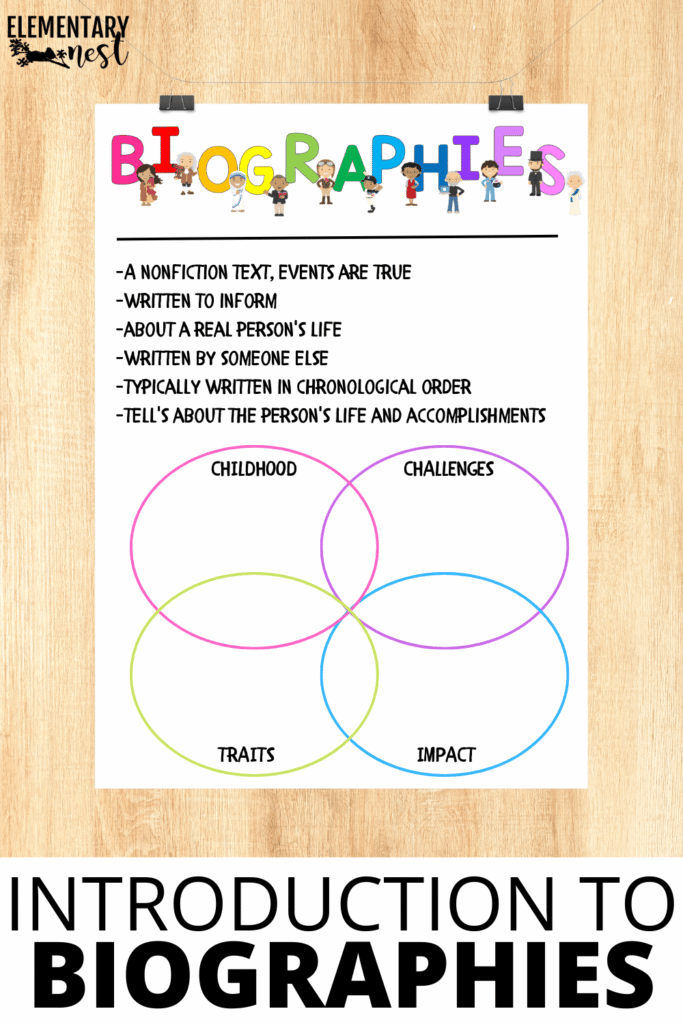
First, you will want to introduce the genre to students and explain why it is important. This can be a simple anchor chart where you list the characteristics of the genre. Use the free biography header pieces to create your own!
*Activity Idea For Biography Header- Print two of each letter. Distribute them to your students to color and cut out as early finishers or morning work. The two people who received the same letter can research the person connected to the letter later as a partner project.

Additionally, you can have students read and write about the genre. You can add a printable comprehension passage, fact or research sheet, or a cut-and-paste activity to their morning work or as an independent activity following your mini-lesson!
Provide Examples

Next, you will want students to understand what a biography is by providing examples. When teaching any genre, it is important to introduce the concept in such a way that students understand its significance.
Books and digital biographies can be used for a variety of activities throughout your unit! Make biographies available for students’ independent reading time, add biography-based prompts to students’ morning work or centers, assign biographies as partner reading, etc.
My Recommendations for Biography Book Series: (These are affiliate links to Amazon’s website).
- Who Was? Biography Series
- The Story of Biography Series
- Mini Movers & Shakers
- Ready to Read: You Should Meet
Digital and Online Biographies
- BrainPop, Jr. Biographies
- BrainPop Famous Historical Figures
- PebbleGo Biographies
Taking a Closer Look

Now, it is time for students to read and analyze biographies. This is an important part of teaching the genre.
Teaching students how to read and analyze biographies helps develop their ability to look beyond the surface. During this time, you will want to work on critical thinking skills, close reading, determining importance, and evaluating source reliability.
Skills that can be incorporated with Biographies:
- Main Idea & Important Details
- Inferring & Drawing Conclusions
- Chronological Order
- Cause & Effect
- Problem & Solution
- Text Features + Images in Nonfiction
- Research Writing
Connect Other Content
Integrating biographies with other subjects has many benefits. It helps to draw connections between iconic figures of the past, and how they influenced our current society. Biographies teach us more than just the history of an individual: they bridge gaps in our knowledge and appreciation for subjects like social studies and history by introducing us to very real people who have been able to shape both the world and our understanding of it. This can be done with more subjects than social studies, though. You can study biographies of people who have impacted math, science, art, technology, music, etc.
Nonfiction Narrative & Research Writing

Finally, you can include important writing skills in your instruction. Of course, they can work on narrative nonfiction by writing their own autobiographies. Unlike a personal narrative, students will be focused on all of the impactful events in their life thus far. So, I would start by having students create a timeline of the events in their lives. Then, taking their timeline, they can craft paragraphs for each event, connecting them with transitions and details in the next draft.
Autobiographies are great for peer editing and revision. Students will learn from one another as they exchange and edit each other’s autobiographies. Allow for several drafts and revisions with this!
Not only can students develop their narrative nonfiction writing skills by writing their own autobiographies, but they can also practice and improve their research writing skills. Research writing skills are so essential to a student’s writing development.
Some Tips & Tricks for Research Writing:
- Allow some level of student choice when assigning research writing topics/people
- Link reliable and safe search engines to your online class dashboard
- Provide a graphic organizer or note-taking guide for students so that they can collect and organize their research
- Incorporate multimedia project elements, like PowerPoint, Prezi, Video, Audio, etc. to keep students engaged and offer opportunities to use technology skills
- Provide several exemplars of a variety of presentation types if you are doing an end-of-unit project
Would you like free biography anchor chart pieces?

FREE BIOGRAPHIES HEADER!
Get this activity sent directly to your inbox. Check your email after this!
No-Prep Biography Resources You May Enjoy:

If you’re looking to teach biographies and don’t want the added prep, I have resources for you! Each bundle contains individual biography units. If you’re interested, you will find them in the links under the bundle. Click the links for a closer look!
Want to read more about teaching with biography?
- President’s Day Activities
- Techy Ideas for Biographies
- Women’s History Month Activities
- Read more about: Reading Blog Posts
You might also like...

Christmas Story Elements 5 Fun Classroom Activities and Freebie
The holiday season is the perfect time to bring some festive fun into your classroom while keeping students engaged in meaningful learning. Incorporating Christmas story

6 Fun Reindeer Activities Classroom Reading & Writing Crafts
Looking for a fun way to sprinkle some holiday magic into your classroom without disrupting your ELA learning? These reindeer activities for the classroom are

Christmas Bulletin Board Ideas for Your Classroom in December
What better way to spread festive cheer than with Christmas bulletin board ideas? These ideas aren’t just about decorating… they inspire students, display their hard
Join these happy teachers
Join the email list.
Get teaching tips, how-to guides, and freebies delivered right to your inbox every Wednesday!
Hi, I'm Jessica

I help elementary teachers master the standards by providing helpful standards-based tips, guides, and resources.
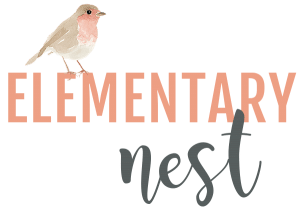
Let's Connect
Access your purchases
© Elementary Nest • Website by KristenDoyle.co


- ELEMENTARY TEACHING , INTEGRATED CURRICULUM ACTIVITIES
Teaching Biographies To Elementary Students (Grades 1-5) in 2025
Teaching biographies can feel intimidating at first, but once you have a solid understanding of the genre, a roadmap of how to teach it, and teaching resources and activities, it’s easy! This post will equip you with all of that and more! You’ll feel prepared (and maybe even excited) about teaching biographies (especially if you are using this biography project and these biography activities )!
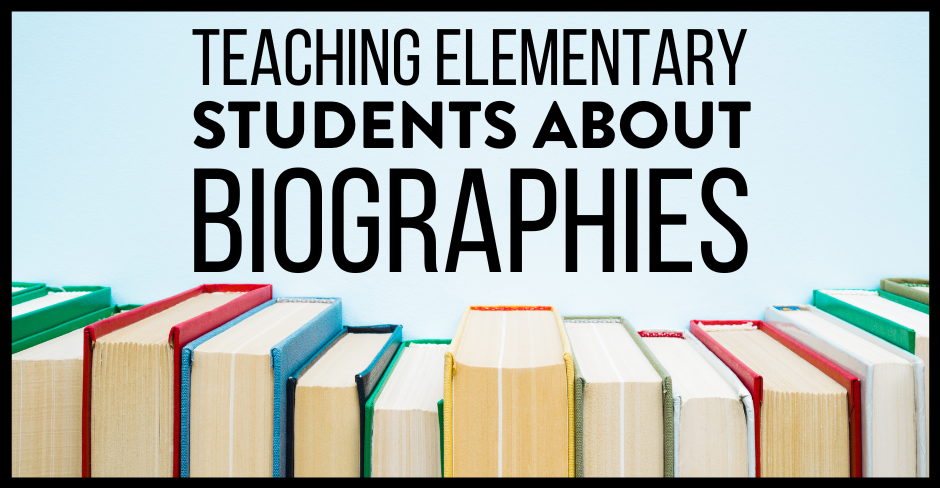
The Benefits Of Students Reading Biographies
There are so many benefits of teaching biographies and autobiographies! Readers are transported into that person’s life. They learn all about the person’s achievements, struggles, culture, life lessons, and personality. Biographies can also teach us about the world through the eyes of the subject while allowing the reader to make connections to them. Most students can find biographies they enjoy when they find people to read about that connect with their likes and dislikes to top it off.
How To Introduce The Biography Genre To Students
The easiest way to introduce and teach biographies is by gathering as many biographies and autobiographies as possible from your classroom library, school, and public library. Make sure that all the books you collect are around your student’s reading levels. This idea works for any theme.
Then, set out the books you collected on each of your students’ tables and have them explore. Ask them to write down what they notice. What do all the books have in common? Have students write down their findings on chart paper.
Next, have each table share with the class what they noticed. They should come up with some ideas like:
- They are all about people.
- The person accomplished something big.
- They all include essential dates or a timeline of the person’s life.
- They included real pictures or illustrations of the person.
- The books all tell factual information, and there are no made-up stories.
Lastly, tell students that books with these characteristics are called biographies or autobiographies. Be sure to tell students the difference between biographies and autobiographies too. Create an anchor chart to hang up for students to reference throughout your biography unit!
4 Ideas For Biography Mini Lessons
After introducing biographies, try one of these mini-lesson ideas for teaching biographies!
- Have students pick a person they are interested in learning more about. Then have them find books about the person and complete a research project about that person to present to the class. You could even take it a few steps further and have students share what they learned in costume as the person they researched in a wax museum activity!
- Have students create a social media page of the person they learned about in their biography
- Have students read about a person of interest, and then write journal entries as that person.
- You could make it seasonal! Around fall, have students paint a pumpkin like a person they read about and present important events or accomplishments as they share their pumpkin. In spring, students could make biography flowers where the center was a photo of the person, and the petals are important events and accomplishments.
Strategies For Using Mentor Texts To Model Reading Biographies
Teaching biographies is simple when you use these strategies!
First, pick any biography or autobiography mentor text and read it aloud. Ok, maybe not ANY. Be sure to choose one that will be engaging to your students. Think about the things they enjoy and go from there. I love picture books because students can generally read them in one session. (Make sure you preview the text first and mark with sticky notes to remember to stop and discuss during the read-aloud!)
Stop at important dates, accomplishments, life lessons, or significant life events to discuss. I even stop to discuss any figurative language or text features included. This will help students with both reading and writing! Students generally have TONS of connections to share during biography read alouds that lead to great conversations.
How To Teach Students To Write Biography Reports
One way to help students learn how to write biographies is to write their first one about themselves! Students can brainstorm what should be included in their biography by creating a timeline that includes important events in their life. Then, they use the timeline to help them write their biography in chronological order. You can model this with a biography about yourself on an anchor chart for students to use if they need help. This is also an excellent way to get to know each other at the beginning of the year!
When it comes to writing biographies about other people, students need to have read several biographies to get an idea of how authors organize this type of writing. When you read aloud, be sure to point out that authors of biographies generally write the story of the person’s life from beginning to end. So students will need to be familiar with sequential order/chronological order text organization. Have students fill in a timeline when you model during read alouds. Point out that biographies usually focus on a part of the person’s life that taught them a life lesson. This biography project and biography activities are great resources for teaching biographies.
Resources for Teaching Biographies
Here are some resources for teaching biography:
1. Biography Project for Elementary Students
Are you looking to begin using a biography project ? Perhaps you are just looking for something better than you already use. If so, this is the resource you need! It is a great resource for teaching elementary students about biographies.
This is a great project to complement a genre study of biographies, an author study, social studies concepts and more. I’ve recently updated the entire product so that it now includes an option to do the Living Biography Museum where families come into school and the students “perform” in character OR can instead be used simply as an independent research project in class or as a homework assignment.
The twist is that instead of having the students dress in costume (which can be a hassle for the parents since most kids can’t put their own costume together) they make a poster board costume with a space for their head to pop through.
A-DOR-ABLE!!!
In the past I’ve done the living museum and had students prepare a brief speech to recite in character. This year I opted to send it home as a homework project and will instead take their photos with their poster board and display them with the written report.
This download now includes BOTH the original version and my new and improved updated version as well. If you have high achieving students who need enrichment this is a perfect activity for them to do on their own or you can use it with an entire class. It’s ideal for grades 2-5.
This biography project contains everything you need to have your students complete a project of their very own to present in class or at a Living Biography Museum.
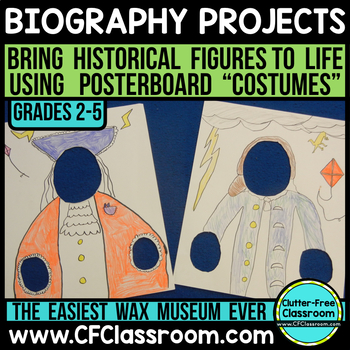
What is included in this biography project?
Make teaching biographies fun by incorporating this biography project , which includes the following:
- Grading rubrics / criteria checklist
- Graphic organizer to plan writing
- Graphic organizer to record sources
- Student writing pages
- Poster board visual directions
5 Reasons Why Teachers Love It
Below are 5 reasons why teachers love using this resource for teaching biographies.
- This comprehensive biography project includes differentiated materials, so all you will be able to meet all of your students’ needs and your they will feel successful.
- The project makes a challenging concept accessible for elementary students.
- This resource facilitates a fun hands-on learning experience that offers opportunities for students to practice important skills without them even realizing it.
- This print and go resource will save you lots of time planning and prepping.
- It is aligned to the Common Core Standards, so it will give you peace of mind knowing your students are practicing important grade level skills.
How to Implement the Project in Your Classroom
You can either do a Living Biography Museum where families come in to school and the students perform in character or it can instead be used simply as an independent research project in class or as a homework assignment.
How I Used the Resources in My Classroom to Teach Biography
We had so much fun making these bio poster boards.
As a bonus, the kids learned a ton.
I started by having them complete oodles of activities from my biography activities packet which acquainted them with a whole bunch of famous folks.
Then I had them work in teams to research Benjamin Franklin. They had discussions about why he was famous. They talked about his accomplishments. Finally, they each wrote about him in the 1st person and performed a monologue as if they were Ben.
To make it oh-so-much-more-fun, I gave them each a poster board to use as a “costume.”
I’m now having them each select their own historical figure of choice to repeat the process as an independent project at home.
I seriously loved this project. The kids did too.
They enjoyed walking around wearing their poster boards and singing, “Who flew a kite in a storm and made history… Ben Franklin Square Pants.”
They also enjoyed having “conversations” with each other while wearing the poster board.
Kid 1: Hey Ben
Kid 2: Yo Ben
Me: **Listening carefully how this conversation is going to go.**
Kid 1: Ben, I really liked how you proved lightning was electricity.
Kid 2: Thanks Ben. You know you’re awesome, right? I mean, you signed the Declaration of Independence and all.
Kid 1: I know dude, right? I totally rock!
And then there was the boy who did a stellar job with his presentation… and then ended it by yelling, “Thank you Philadelphia. Ben Franklin has left the building.”
Third graders make me laugh.
2. Biography Activities for Elementary Students
These biography activities are great resources for teaching biographies to elementary students. It provides teachers with no prep printable biography activities that can be used over and over when studying any person.
This unit was designed to enhance the study of individuals. The activities can be used as part of a genre study or within the content areas. I have also used them with author studies and have had the children complete them as autobiographies about themselves.
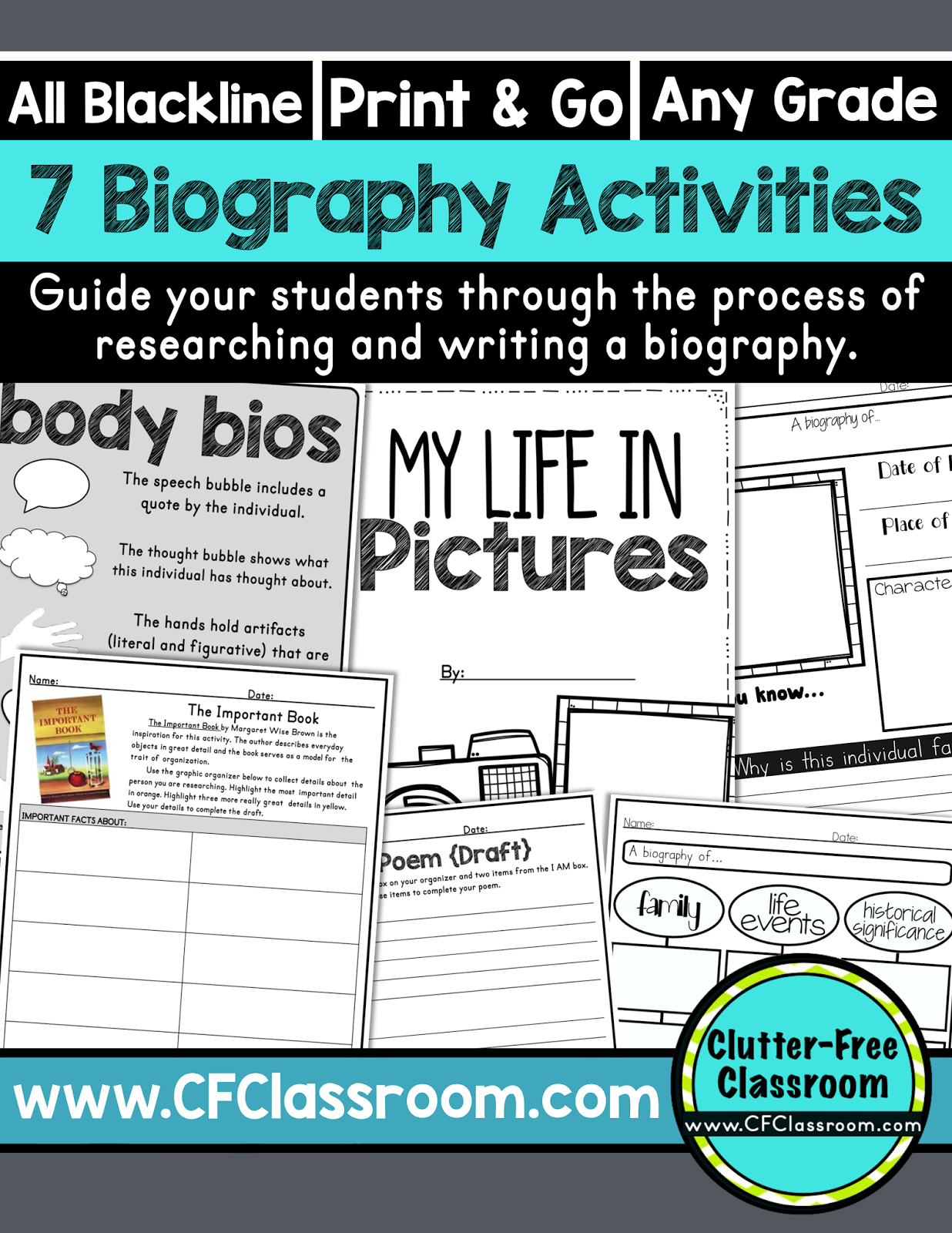
What is included in this resource?
This biography activities resource includes 7 activities. Learn about them below!
1. Biography Poster
Students gather information about any individual and use their research to create an 8.5 x 11 inch poster. The poster has spaces to record the person’s name, date of birth, place of birth, interesting facts, reasons of importance and character traits. They then draw a portrait of their individual.
2. My Life in Pictures: A Scrapbook Biography Project
To complete this biography, activity the student will take on the role of the individual they are studying. The student can either draw illustrations or print and attach photos highlighting important parts of the individual’s life. The student then writes captions. This biography report is so much more fun than writing an essay and more pages can be added as enrichment.
3. Top-Down Topic Web
This graphic organizer shows the relationships to the main idea and details. They represent main ideas in a hierarchy. These research-based tools help the students to comprehend what they have read because it organizes ideas in a systematic, visual graph.
4. The Important Book Biography Activity
The Important Book is a great book for teaching students about writing patterns. This activity was modeled after the format of that book and was designed to encourage students to identify key, important facts about the person they are studying. It makes a great bulletin board display.
5. Body Biography
A Body Biography project is a combination of artwork and writing. The packet includes a poster to use as directions or to display with the students’ completed biography projects. They complete sections such as a speech bubble with a quote by the individual, a thought bubble to show what they have thought about, shoes labeled with places the person has been, a heart filled with character traits. They then draw objects in the hands that relate to the person and create a background that tells the viewer more about the historical figure.
6. Timeline Biography Report
Unlike a lengthy written report, this is a creative way to showcase important events in the person’s life. Students identify key moments and tell about them in words and pictures. They are added to a foldable accordion booklet in sequential order.
7. I AM Poem
An I AM Poem is typically completed as an autobiography. I also have my students do one about themselves to learn more about them. The format is also great for showing what they know about a person they have learned about. The students take on the role of that person to write the poem in the first person.
- These biographies activities are high-interest for students, so they’ll be motivated to learn through reading and researching.
- This comprehensive resource includes differentiated materials, so all you will be able to meet all of your students’ needs and your students will feel successful.
- Your principal, colleagues and school librarian will be impressed by the creative methods of sharing learned information and the integrated learning that takes place.
- The resources can be used with an biography study and be used over and over again.
How to Implement it in Your Classroom
It’s part of our social studies curriculum and technically it is a study of Massachusetts Biographies, but we began learning about the genre with a mini-study of Martin Luther King Jr.
I read several picture books and the students buddy read a free printable reader from A to Z.
We created a top-down web listing information that we learned about MLK.
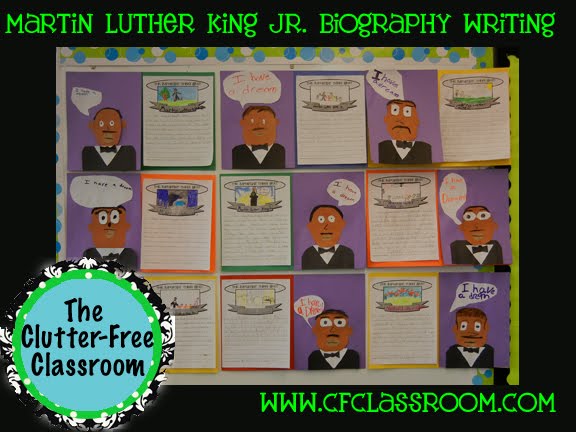
Then I read The Important Book by Margaret Wise Brown, and the students completed an activity I created for my biography packet that was inspired by the book. They used the same format as Brown’s book to compose their own version, “The important thing about Martin Luther King Jr. is…”
Finally, each of my friends made a portrait of MLK using the directions from TLC. They came out crazy cute. I hung each of them up even though I’ll probably take them down and send them home soon. They were just too adorable not to display.
Today, we did another activity (The I Am Poem) from the biography activities packet and a craftivity to go with it. I really feel like I am able to get to know my students on a completely different level through projects like these. They really open up and share such sweet ideas and insight into who they are.
3. Biography Picture Books
Belo are 4 high-quality biography children’s books for elementary students.
1. Martin’s Big Words by Doreen Rappaport
Martin’s Big Words by Doreen Rappaport is a nonfiction picture book that teaches children about the life and dream of Dr. Martin Luther King Jr. Students will learn what life was like for Martin growing up and how he became a leader in the fight for equal rights.
Throughout the book, the author includes actual quotes from Martin Luther King Jr. This book explains how Martin Luther King Jr. encouraged people to use their words to make change and the impact he had on the country. This story follows Martin all the way from childhood through the end of his life.
I liked this book so much I added it to my Starts With a Story collection! Grab these Martin’s Big Words activities to deliver a highly engaging and purposeful interactive read aloud!
2. The Story of Ruby Bridges by Robert Coles
The Story of Ruby Bridges details the struggles that six-year old Ruby Bridges endured when she was chosen to attend an all-white, segregated school as a black girl.
All of the other students’ parents pulled their children out of school because of her, and so she was forced to attend class all alone. She was escorted by U.S. Marshalls every morning, as she had to listen to jeers and insults being thrown at her while she was entering the school.
Despite these hardships, Ruby’s courage through non-violent actions did so much for the civil rights movement, and later that year, two white boys started to attend school with her. This inspirational true story teaches children that, no matter what age you are, anyone can be a trailblazer for change.
I liked this book so much I will be adding it to my Starts With a Story collection! Grab these The Story of Ruby Bridges activities to deliver a highly engaging and purposeful interactive read aloud!
3. The Girl Who Thought in Pictures: The Story of Temple Grandin by Julia Finley Mosca
The story The Girl Who Thought in Pictures follows the life of Temple Grandin. The story starts off with Temple being born, and the doctors thinking that she needed to be sent away because she was different. Temple liked to watch things spin, did not like loud noises or crowds, anything that was itchy, or big squeezy hugs. She also did not talk until she was three. Temple got diagnosed with Autism. Her mom said that Temple was “different, not less.”
When Temple goes to school, the children there would tease her relentlessly. One day, Temple’s mom thinks that it would be better for Temple to stay on her aunt’s ranch. There, Temple finally feels comfortable and explores ways to help animals. Temple goes to college and gets three degrees! Now she travels the world giving speeches and spreading hope. She spreads the message that the world needs brains of all kinds.
I liked this book so much I added it to my Starts With a Story collection! Grab these The Girl Who Thought in Pictures activities to deliver a highly engaging and purposeful interactive read aloud!
4. Planting Stories: The Life of Librarian and Storyteller Pura Belpre by Anika Denise
The sixth picture book on the list of books that are great for teaching biographies is Planting Stories . It is a biographical picture book about Pura Belpre, who was the first Puerto Rican Librarian in New York City. When she started working the library, she realized that there weren’t any of the stories and folktales that she was familiar with in Puerto Rico. She decides to share her stories during story hour and through puppet shows, and eventually publishes a book.
Pura travels across the country and from classroom to classroom planting her story seeds and educating about her homeland. When she returns to the library, she sees that her story seeds have bloomed and everyone is telling her stories. Students will love learning about Pura and how she shared her stories with children everywhere.
I liked this book so much I added it to my Starts With a Story collection! Grab these Planting Stories activities to deliver a highly engaging and purposeful interactive read aloud!
You might also like...

Solar Eclipse Activities for Elementary Students – 2025
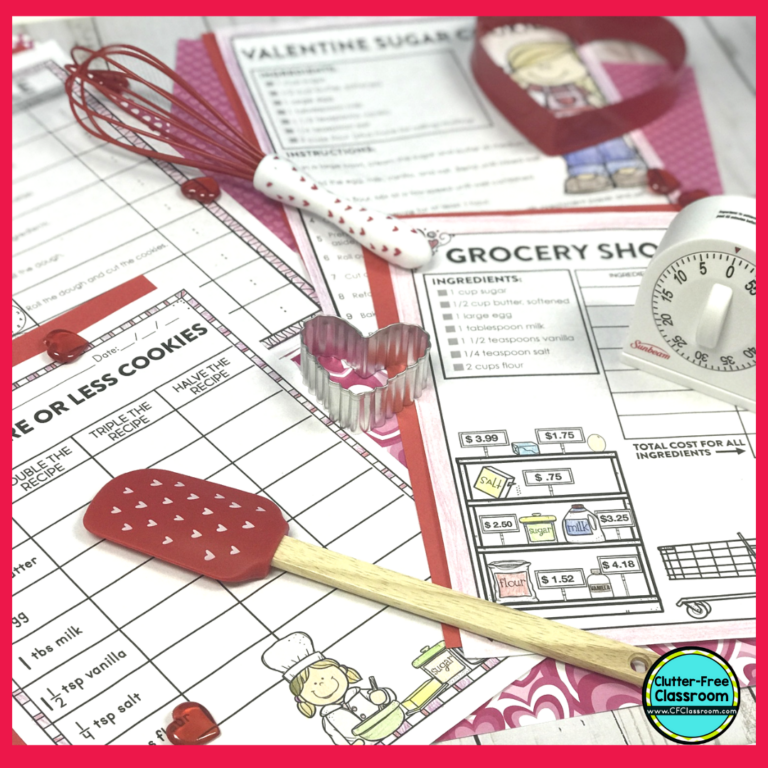

Project Based Learning Activities for Elementary Students
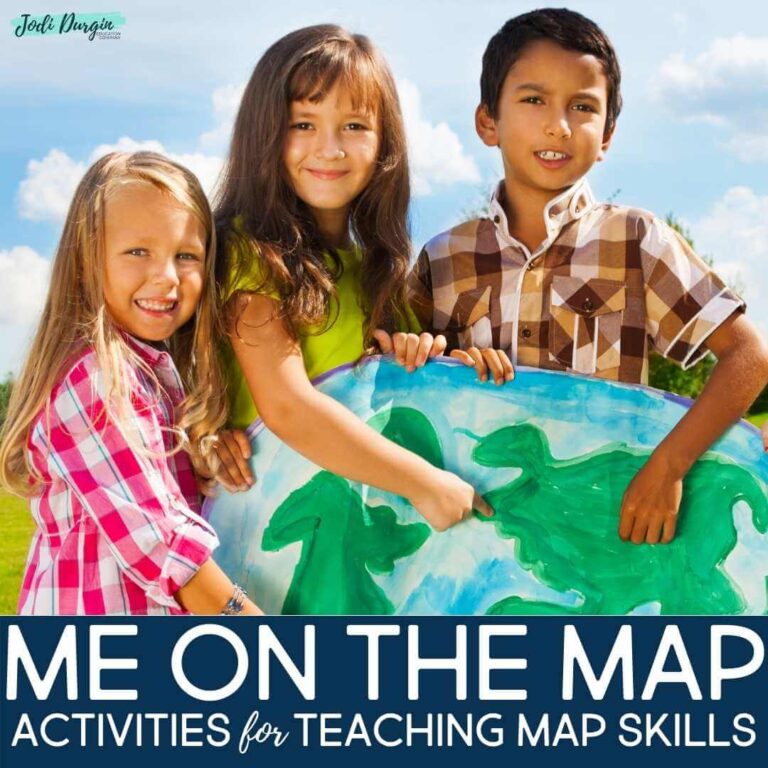
Me on the Map Activities and Printables for Elementary Teachers – 2025
Join the email club.
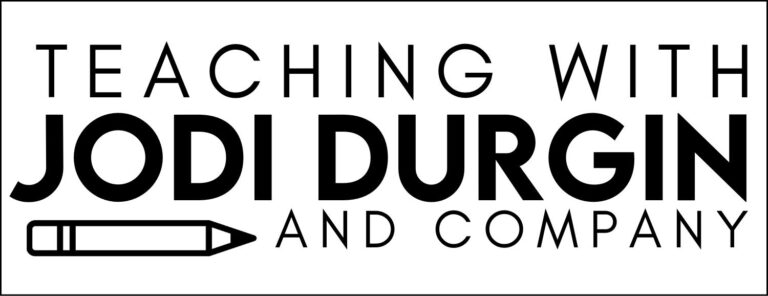
- CLUTTER-FREE TEACHER CLUB
- FACEBOOK GROUPS
- EMAIL COMMUNITY
- OUR TEACHER STORE
- ALL-ACCESS MEMBERSHIPS
- OUR TPT SHOP
- JODI & COMPANY
- TERMS OF USE
- Privacy Policy
- Grades 6-12
- School Leaders
Don't Forget to Enter Today's Very Merry Giveaway!🎁
40 Must-Have Anchor Charts for Teaching Writing of All Kinds
Writing information and inspiration for all!

When it comes to writing, many kids struggle to get their ideas down on paper. That’s why we’ve rounded up all the best writing anchor charts, to help your students master narrative, transitions, punctuation, editing, theme, and so much more! Try some of these ideas in your classroom to give your kids the writing support they need.
1. Why Writers Write

First and second graders will draw inspiration from this fun-filled anchor chart about why we write. Make this chart applicable to older students by expanding on each aspect with a specific audience or goal. “To share experiences” can become “to share experiences with friends, in a postcard, or with readers of a memoir.”
Source: Cara Carroll
2. Expanding Sentences

Show students how a simple sentence can become a real powerhouse by exploring when, where, how, and why, along with adding adjectives. So powerful!
Source: Upper Elementary Snapshots/Expanding Sentences
3. Personal Narrative

Personal narrative is a style that all students practice in elementary school, and writing anchor charts can help keep them on track. Visit the link below for great worksheets to use with your students to prepare them to write their personal narratives.
Source: Rachel’s Reflections
4. Hook Your Reader

Want to know how to draw the reader in and make them eager to continue? You need a hook! Teach students how to grab a reader’s attention from the get-go, pulling them in with facts, questions, or even sound effects.
Source: Little Minds at Work
5. Point of View

Learn the differences between first person (I), second person (you), and third person (narrator), and talk about when each type is effective.
Source: Oh Boy … It’s Farley!
6. Organized Paragraph

Use a stoplight to help early elementary students understand and write clear paragraphs. As students are editing their work, have them read with green, yellow, and red pencils in hand so they can see how their paragraphs are hooking and engaging readers. See a video of this chart in action here.
7. Practicing Transitions

There are more stoplight writing anchor charts, and this one is perfect for helping students learn and practice their transition words. Draw the stoplight first and invite students to help come up with different words. Then encourage students to put the transition words into practice.
Source: A Happy, Hungry, Healthy Girl
8. Author’s Perspective

Sometimes, an author’s opinion comes out strongly in their writing, even if they don’t state it up front. Use this chart to help students find the clues to an author’s perspective.
Source: Crafting Connections/Author’s Perspective
9. Author’s Purpose Pie

This is a quick and easy anchor chart to help students see different types of writing. It’ll also help them do a quick check to make sure their writing aligns.
Source: Literacy Ideas
10. Dig Deeper

Keep going! Sometimes it’s hard to express what you mean by certain writing and revision requests, and writing anchor charts can show exactly what you mean. Now students can get a good look at what it means to dig deeper.
Source: Pinterest
11. Alternatives to “Said”

If your students are learning about writing dialogue, an anchor chart like this could really come in handy. Encourage students to try other ways to have their characters respond.
Source: ESL Amplified
12. Understanding Character

Before you can write about character, you first have to understand it. This anchor chart will help your young writers understand the difference between inside and outside characteristics.
Source: Teacher Trap
13. Diving Deeper Into Character

Now that your students understand the difference between inside and outside characteristics, dive deeper into describing a specific character. This anchor chart is a wonderful idea because students can write their idea(s) on a sticky note and then add it.
Source: Crafting Connections/Teach and Task Lessons
14. Six Traits of Writing

This anchor chart is jam-packed with things to help fourth- and fifth-grade writers remember the six traits of writing. Use the chart as a whole-class reference or laminate it to use in small groups. When it’s laminated, students can check off each aspect they’ve included in their own writing. Meaningful dialogue? Check! Problem and solution? Check!
Source: Working 4 the Classroom
15. Writing Realistic Fiction

This anchor chart reminds upper elementary students how to create realistic stories. It really walks your students through the process, so they have all the elements they need to create their own stories.
Source: Two Writing Teachers/Realistic Fiction
16. Sequence of Events

Help early elementary students stay organized with an anchor chart that’s focused on order-of-events language. Tactile learners can write their first drafts on sentence strips and use this format to put the events in order before they transcribe their work onto writing paper.
Source: Life in First Grade
17. Informational Text Structures

Focus upper elementary students on the most important aspects of informational writing while keeping them organized. This chart could be used to support paragraph writing or essays.
Source: Teaching With a Mountain View/Informational Text Structures
18. OREO Opinion Writing

This deliciously inspired opinion anchor chart can be used by students in grades 3–5 during writers workshop or when developing an opinion for discussion or debate. To build out student writing, have them “double-stuff” their OREOs with extra E examples. See a video featuring this chart here.
19. Features of a Great Report

Use examples of outstanding student work to make this anchor chart. Keep it relevant by updating the examples with student work throughout the year. In kindergarten, this will also showcase how students move from prewriting and pictures to writing words and sentences.
Source: Joyful Learning in KC
20. Write From the Heart

Sometimes the hardest part about writing is coming up with whom and what you should write about. This is the fun part, though! Use this anchor chart to remind your students that they have lots of good writing options.
Source: First Grade Parade via Cara Carroll
21. Argument Writing

Use this anchor chart with middle schoolers to make sure they’re considering all sides of an argument, not just the one that matters the most to them. One way to adapt this chart, as students develop their understanding of argument, is to write each element—claim, argument, evidence—under a flap that students can lift if they need a reminder.
Source: Literacy & Math Ideas
22. Writing Process

This is an anchor chart you’ll direct your students to again and again. The writing process has several steps, and it’s good to remind students of this so they don’t get frustrated.
Source: What’s Skow-ing On in Fourth Grade?
23. Writing Checklist

For those young writers in your class, these cover the basics in a clear way.
Source: Kindergarten Chaos
24. RACE for Writing

Use the RACE mnemonic when your students are working on persuasive writing. It reminds them to cite their sources and be sure to answer the question being asked.
Source: @mrspuffer
25. Cause and Effect

Cause and effect will always be an essential part of any story. Help your students come up with different scenarios for cause and effect. In many instances, you could have multiples effects, so challenge your students to identify three to four at a time. This will really give them something to write about!
Source: 2nd Grade Superheroes
26. A Strong Lead

This upper-grade anchor chart gives students lots of ways to start their writing. Update it midyear with strong examples of leads that students have written or that they’ve found in books. Students could also copy this chart into their notebooks and keep track of the different ways they’ve started their own writing, seeing if they’ve developed a signature lead.
Source: Miss Klohn’s Classroom
27. Crafting Power Sentences

Inspire students to get crafty and creative with their sentences. Update the moods or keywords with every writing assignment, so students are constantly refining their clauses, verbs, and descriptions.
Source: Teaching My Friends
28. Show, Don’t Tell

“Show, don’t tell” is a cardinal rule of writing. This anchor chart, best for upper elementary writers, can be used to strengthen scenes in fiction and narrative nonfiction works. Build out this chart for middle school writers with additional ideas and more complex emotions.
Source: Upper Elementary Snapshots/Show, Don’t Tell
29. Narrative Organizer

Leave this chart up in your classroom for your students to reference often when they’re writing. It really takes them through creating a successful story.
30. Expository Writing

This chart makes it easy for students to remember key concepts, both with color-coding and simple metaphors. Give them colored pencils and ask them to underline the corresponding sections in their essays.
Source: Adventures of a Future Teacher
31. Peer Editing

Peer editing teaches kids a variety of skills, and not just with writing. They learn to read closely, offer (and accept) useful constructive feedback, and get more comfortable sharing their writing with others. This chart helps kids through the sometimes-challenging process.
Source: Taleof2Teachers
32. Strong Sentences

Get early elementary students to write longer, more descriptive sentences with this chart. Bonus: Use sentence strips to switch out the examples of strong sentences, based on student writing.
Source: The Good Life
33. Internal Story

This chart gives students the language to add their own thoughts to their writing. Modify this chart by highlighting key phrases for students with special needs. Or have students create different thought-bubble icons to represent each internal dialogue sentence starter.
Source: Totally Terrific in Texas
34. Evidence Supported

Upper elementary students will benefit from reminders on how to refer to and cite text evidence. Use this anchor chart during writing and discussion to help connect the language that we use across domains.
Source: History Tech
35. Publishing Guidelines

Kids are often quick to turn in their papers without making sure they’ve included all the necessary requirements (like their names!). Use this chart to remind them about the important things to check for before they hand in their work.
Source: Juice Boxes and Crayolas
36. Figurative Language

As you teach your students about figurative language and how to use it, you’ll want to have examples. This anchor chart dives into five different concepts. Each of these could actually be its own anchor chart. Perhaps have your students come up with examples on sticky notes and then place them on the chart.
Source: Willow Grove Elementary School
37. Forms of Poetry

Introducing poetry types to your students? This anchor chart covers the basics and helps kids remember that not all poetry needs to rhyme.
Source: ELA Anchor Charts
38. CUPS and ARMS

This is a popular method for teaching kids to revise and edit as well as the difference between the two. Simple acronyms keep the key strategies close at hand.
Source: Amy Lemons
39. Spicy Edits

Encourage your students to think of their writing like a recipe, which they can always tweak and improve. Have them choose one element, or “spice,” to add to their work as they revise.
Source: Beyond Zebra/Pinterest
40. Writing Buddies

Sometimes students can get stuck when working with writing buddies, but writing anchor charts can help. This one encourages students to be positive and make good, thoughtful suggestions.
Source: Apostrophe Books Twitter
What are your favorite writing anchor charts? Share your ideas in our WeAreTeachers HELPLINE group on Facebook.
Plus, find out why the “hamburger” essay has gone stale, and what to try instead ..

You Might Also Like

16 Ideas For Student Mailboxes That Fit Any Budget and Classroom
They've got mail! Continue Reading
Copyright © 2024. All rights reserved. 5335 Gate Parkway, Jacksonville, FL 32256
Lesson Plans Learning
Anchor Chart For Biography Unit (With Images) | Writing
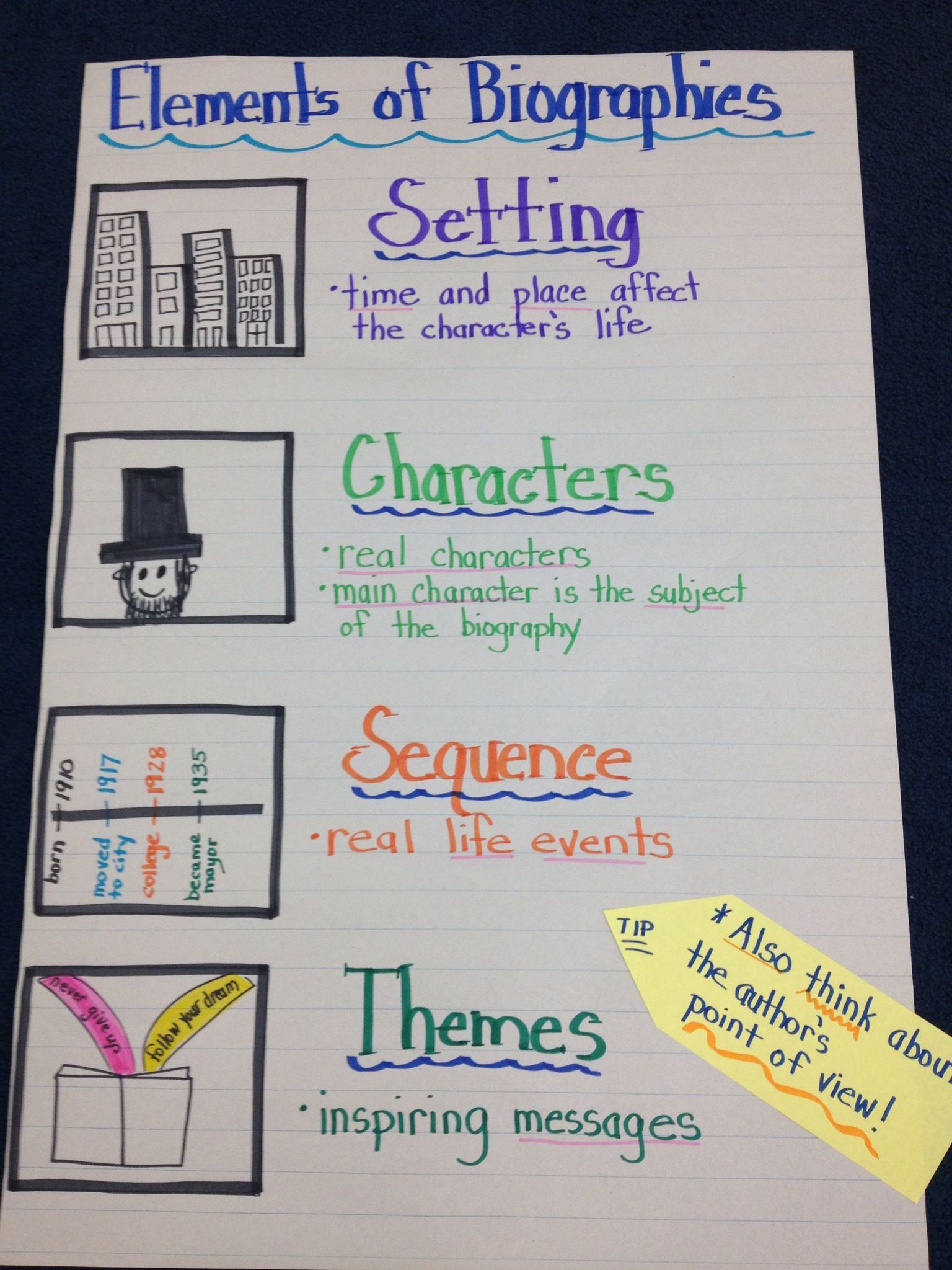
Downloads: full (1536x2048) | medium (235x150) | large (640x853)
Some educators will give the students composing suggestions on paper while others will offer a aesthetic discussion on hand. Regardless of the technique that is made use of, the trainees are provided creating materials that they can use to obtain begun.

The first thing to keep in mind is that lesson plans need to be enjoyable. This holds true whether the lesson has to do with becoming a writer or speaking regarding the weather condition. If the instructors are mosting likely to come up with methods to inspire their pupils to talk or write , they need to see to it that the materials picked to help them along the way are fun also.
When picking 4th Grade Lesson Plans is that you ought to attempt to have plenty of different instances of what the trainee will certainly be composing, an additional thing to keep in mind. This will certainly guarantee that they will have the ability to go off of the directions that they are provided without needing to bother with failing to remember the actions needed to compose the assignment. In order to avoid this, you should ensure that you offer the students great deals of various options that they can choose from.
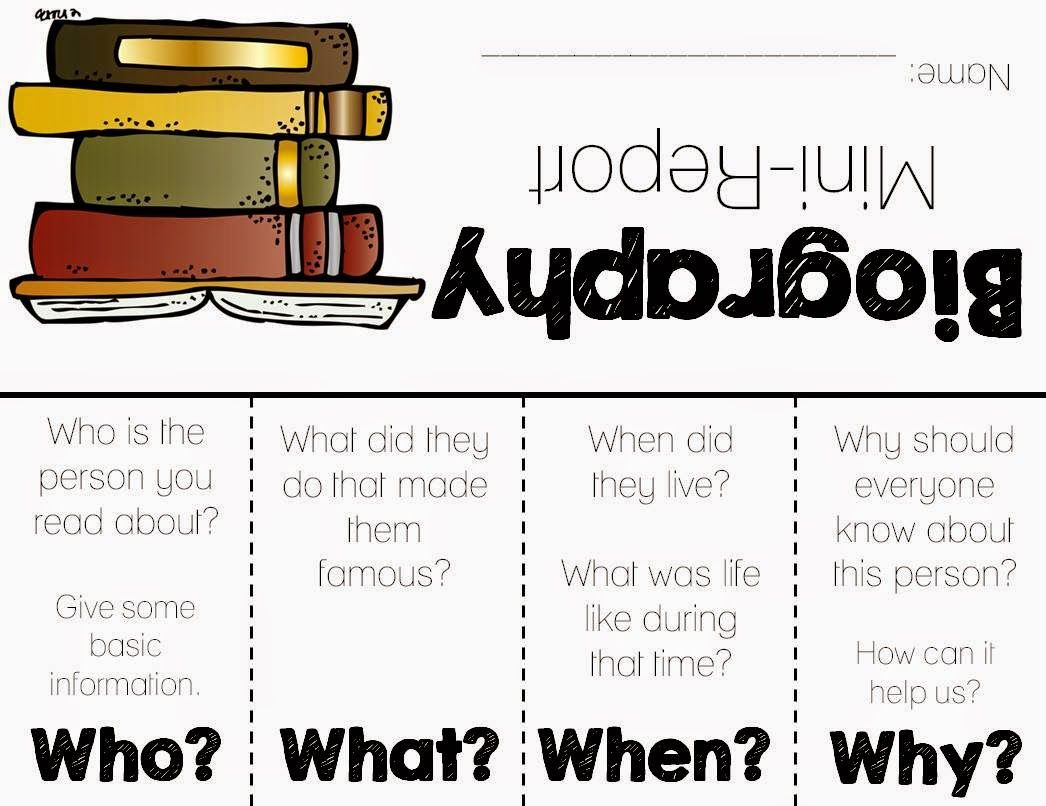
In addition to locating out what sources are available to the trainees, you additionally require to examine on just how very easy the course products are to work with. You do not want to be struggling with the devices that you are offering your trainees.
When you look at lesson plans on writing, you need to remember that there are a lot of different options readily available. Whether it is paper pencils or anything else that your pupils may need for this activity, you need to be sure that you locate the best materials readily available. You can find what you require on Amazon or through an on-line shop that focuses on creating and lesson plans.
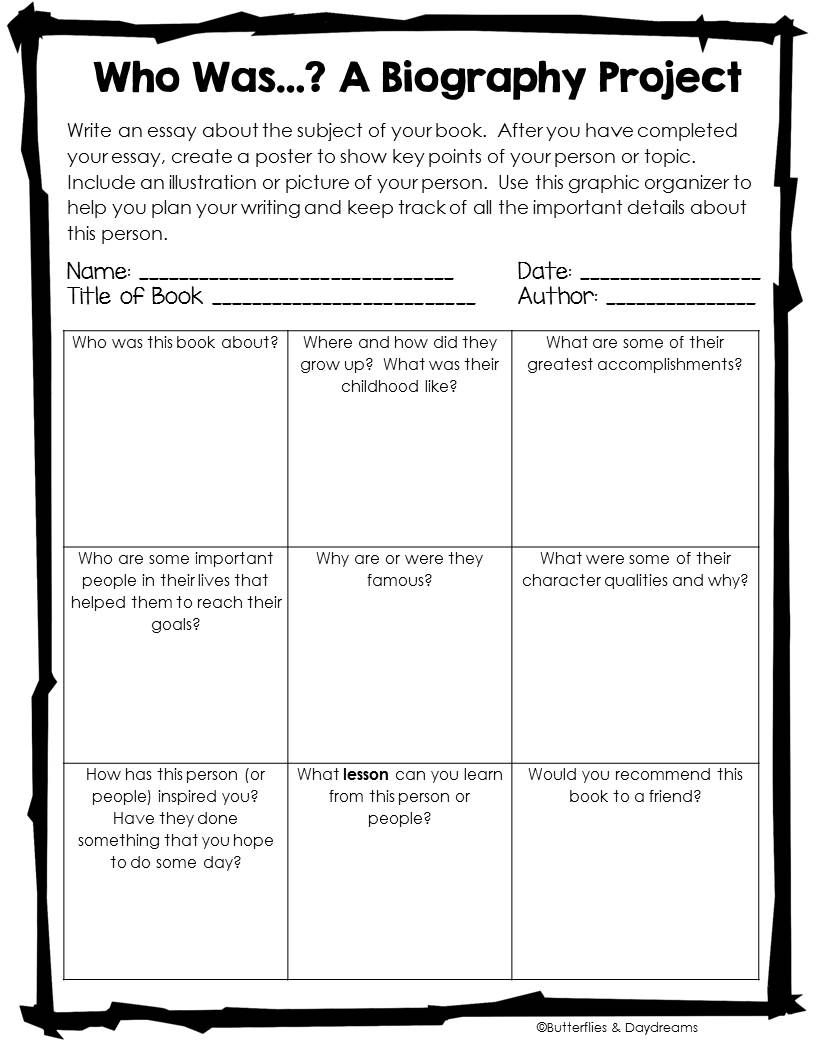
Due to the terrific sources that are available for 4th Grade Lesson Plans, you will locate that the tasks that you provide your trainees are very easy to work with. Whether they are focused on brainstorming or working on a tale about some pets, the tasks are mosting likely to be challenging however fun at the same time. This will make the moment that they invest doing them a lot more efficient and they will not feel like they are spending more time at college than they truly are.
You likewise need to remember that you need to see to it that your lesson prepare for creating are truly basic. It is essential that you make certain that they are not going to take too long for your pupils to do when you obtain them together. In addition to this, you additionally require to ensure that you have adequate sources for your pupils to survive this job on their own.
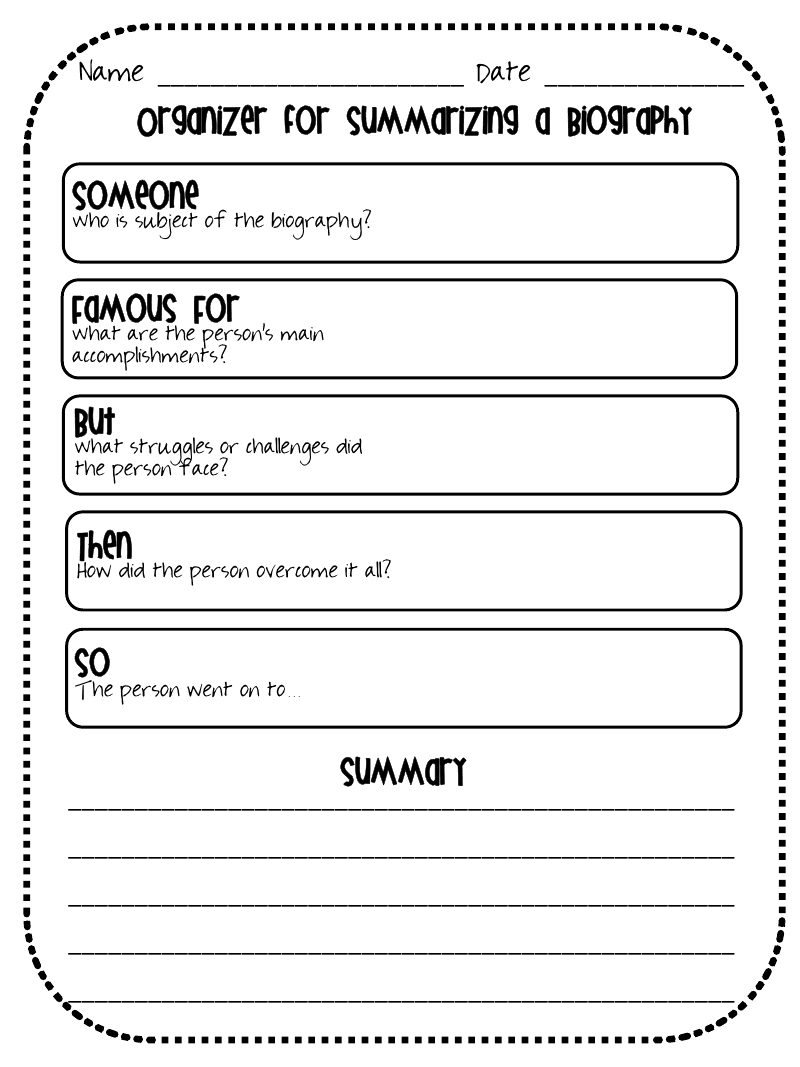
Obtaining creating projects done in a short time is a challenge that any kind of teacher has to manage. This is why it is so crucial that you discover the ideal sources for your trainees. When you locate them, you will make sure that they will certainly have fun with the writing project and also you will certainly have the ability to move on with other tasks at the same time.
Anchor Chart For Biography Unit (With Images) | Writing Uploaded by Mary J. Bourquin on Friday, May 8th, 2020 in category 4th Grade Lesson Plans .
See also Biography Project Grades 2 5 | Biography Project, 3Rd from 4th Grade Lesson Plans Topic.
Here we have another image Organizer For Summarizing A Biography | Reading Classroom featured under Anchor Chart For Biography Unit (With Images) | Writing . We hope you enjoyed it and if you want to download the pictures in high quality, simply right click the image and choose "Save As". Thanks for reading Anchor Chart For Biography Unit (With Images) | Writing.
Biography Lesson Plans 4th Grade Gallery
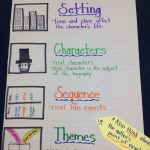

Biography Unit Ideas for Primary Grades
By grade 4, students are expected to be able to conduct some research, organize ideas and use their knowledge to create various pieces of writing. What better way to facilitate these practices then by conducting a biography unit? Biographies offer students many benefits, some of which are gaining a new perspective on their own life, while being inspired by the works of others. Below are some biography unit ideas for primary grades.
Before beginning this unit it is a good idea to have a discussion about fictions vs. non-fiction texts. As well as, discussing how to write an engaging story/biography. For reference, you can look into a story writing unit and learn more about nonfiction lesson ideas .
How to start :
Start your unit off by introducing the concept of a biography. I typically remind my students about the characteristics of non-fiction texts (ex. factual information, headings, table of contents, real pictures, etc). Then, we define what a biography is. If you’re planning this unit for younger students, then you can skip talking about the features and simply discuss the purpose of a biography. Here are some anchor chart ideas to go through with your students:

Begin With Examples :
Once you’ve introduced the concept and features of a biography, it’s time to start reading biographies as a class. Be sure to draw attention back to your anchor charts/discussions (it works nicely to also read a biography before discussing features so that students can refer back to the text). I’ve included some child friendly biographies at the end of this post. For now, here are some tips to try during/after reading as a class:

Practice Makes Perfect:
Now it’s time to practice reading & writing biographies, so that the concepts and structure becomes engrained in students’ minds. This can be done in a variety of ways. Here are just some ideas:
- create a ballot box for students to submit the names of famous people they would like to learn more about, and find a biography on the name that gets submitted the most often (student’s will be more interested if they have a say in what they learn).
- incorporate biographies in language center activities.
- have students interview a family member, and write their biography.
- have students choose their favorite character from a story or movie, and create a biography about them.
Here are some graphic organizers to help you and your students along the way:

Thinking of going cross-curricular? Have your students create portraits of famous biography subjects inspired by these:

Assessments:
Conducting assessments throughout your unit is the most surefire way to gage your students’ learning, provide them with feedback and guide the remainder of your unit. Here are some assessment ideas.

Some Great Biographies for Students:

One thought on “ Biography Unit Ideas for Primary Grades ”
- Pingback: Teach NonFiction - Ideas & Tips - The Grade 3 Teacher
Comments are closed.
Biography Anchor Chart (Printable)

Description
Finally, an easy-to-create, easy-to-use, and easy-to-store solution for your anchor charts! No tracing required!
This resource includes SIX different anchor charts to meet all your classroom needs as well as tips and tricks for use in your classroom and with your students.
-----------------------------------------------
Full anchor charts can be printed at approximately 24 x 32 inches using the "Poster" printing feature available on your printer's settings (instructions are included).
Each full chart will print on nine 8.5 x 11 papers that can be taped/stapled together for display. When you are finished displaying your chart, it can be stored flat, in separate pieces, for easy storage and easy reuse the next school year!
There are options included for your students to use in their ELA Binders and/or Interactive Notebooks for note-taking during your minilessons!
The PDF file you purchase will include:
Tips and tricks for use, plus the following six versions of your anchor chart.
Color Version #1 (Completed Anchor Chart)
A full-color version that can be printed as an anchor chart size (approx 24 x 32 inches) by following the instructions included for display in your classroom,
B&W Version #1 (Completed Anchor Chart)
No color printing? A B&W version can be printed for display as an anchor chart size (approx 24 x 32 inches) by following the instructions included.
B&W Version #2 (Completed Anchor Chart)
There's no color printing available, but you still want to add some color to your anchor chart? A B&W “coloring page” version can be printed as an anchor chart size by following the instructions included. Before displaying, add color with markers or whatever your heart desires to customize!
Color Version #2 (Semi-Blank Anchor Chart)
This semi-blank, full-color anchor chart can be used as part of a whole group lesson. Display the digital version of the anchor chart and write on it using a Smartboard, projector, or document camera to include more text and teach your mini-lesson.
B&W Version #3 (Semi-Blank Anchor Chart)
This semi-blank anchor chart can be given to students to fill in during a whole group lesson. This version can be easily printed on 8.5 x 11 paper - a perfect size for an ELA binder or folder!
B&W Version #4 (Semi-Blank Anchor Chart)
This semi-blank anchor chart can be given to students to fill in during a whole group lesson. This version can be easily printed on 8.5 x 11 paper, but print 2 to a page so that students can glue it into a Reader’s Notebook or composition book after filling it in.
Use one version or a few in order to teach valuable skills to your students!
Check out more of my anchor charts by clicking the links below!
Author's Purpose
Cause and Effect
Character Traits
Context Clues
Entertaining Beginnings
Expository Writing
Fact or Opinion
Figurative Language
Making Connections
Point of View
Punctuation
Summarizing
What Gets a Capital?
Writing Dialogue
CUBES Problem Solving Strategy
Measurement & Conversion
& more coming soon!
© CADY PARKER
Questions & Answers
Cady's corner.
- We're hiring
- Help & FAQ
- Privacy policy
- Student privacy
- Terms of service
- Tell us what you think

IMAGES
COMMENTS
Jan 19, 2014 · Learn how to teach biographies with a free anchor chart and a mini-unit on famous and personal biographies. Find out how to get a freebie and a discounted pack on TPT.
Always start each genre with an introductory lesson. To help with making biographies fun, I suggest a biography anchor chart that you can laminate and keep in your classroom throughout the unit or throughout the entire year. Below, you will see a sample anchor chart for biographies. AND I’m linking the letters and clipart for you for FREE ...
Posting anchor charts keeps current learning accessible and helps your students to make connections as their understanding grows. Teach writing with 25 of our favorite anchor charts for the writing process. Keep the charts up-to-date and they'll serve as a living reference in your classroom and will inspire a culture of writing.
First, you will want to introduce the genre to students and explain why it is important. This can be a simple anchor chart where you list the characteristics of the genre. Use the free biography header pieces to create your own! *Activity Idea For Biography Header- Print two of each letter.
You can model this with a biography about yourself on an anchor chart for students to use if they need help. This is also an excellent way to get to know each other at the beginning of the year! When it comes to writing biographies about other people, students need to have read several biographies to get an idea of how authors organize this ...
This resource includes:- 4 black and white anchor charts in two sizes - 8.5x11 and 24x32- 4 color anchor charts in two sizes - 8.5x11 and 24x32- interactive notebook pages for each anchor chart Anchor charts:- biography-autobiography- biography vs. autobiography- liter
Oct 6, 2022 · This anchor chart is a wonderful idea because students can write their idea(s) on a sticky note and then add it. Source: Crafting Connections/Teach and Task Lessons. 14. Six Traits of Writing. This anchor chart is jam-packed with things to help fourth- and fifth-grade writers remember the six traits of writing.
May 8, 2020 · See also Biography Project Grades 2 5 | Biography Project, 3Rd from 4th Grade Lesson Plans Topic. Here we have another image Organizer For Summarizing A Biography | Reading Classroom featured under Anchor Chart For Biography Unit (With Images) | Writing. We hope you enjoyed it and if you want to download the pictures in high quality, simply ...
Mar 2, 2015 · Then, we define what a biography is. If you’re planning this unit for younger students, then you can skip talking about the features and simply discuss the purpose of a biography. Here are some anchor chart ideas to go through with your students: (Taken from Life in 4B.) (Taken from Randall Learning Library.) (Taken from First Grade Fabulosity.)
This semi-blank, full-color anchor chart can be used as part of a whole group lesson. Display the digital version of the anchor chart and write on it using a Smartboard, projector, or document camera to include more text and teach your mini-lesson. FIVE: B&W Version #3 (Semi-Blank Anchor Chart) This semi-blank anchor chart can be given to ...